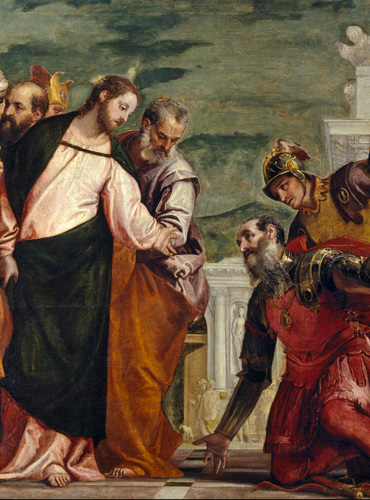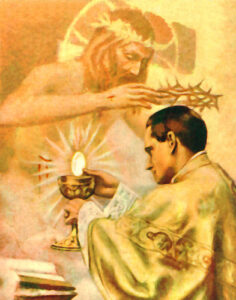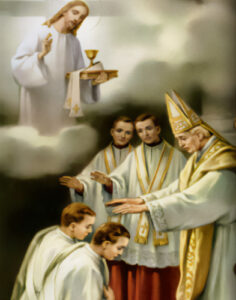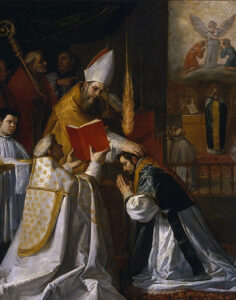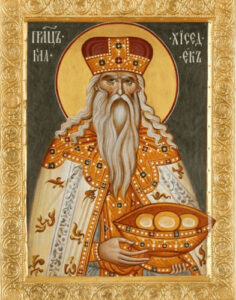Saturday 12th week of Ordinary Time – Mt. 8,5-17
In today’s Gospel, we heard how Jesus worked many healings, in particular that of the Centurion’s servant and Peter’s mother-in-law. This healing work continues today, and in a particular way through the Blessed Virgin Mary. We can consider how she works to help us and bring us health and salvation, in particular under one title.
One interesting Marian advocation is the title Pulchra et luna – fair, or beautiful, as the moon. The title can be found in the Song of Songs, where it is asked of the bride, “Who is this that comes forth like the dawn, beautiful as the white moon, pure as the blazing sun?” The doctors and other saints of the Church has not hesitated to apply this line to the Blessed Virgin Mary, and often see it in light of her role as intercessor with respect to sinners. We can consider three different ways in which Mary is like the moon: the light she gives to sinners, the place she occupies with respect to us and God, and the haste with which she provides assistance. Light, place, and haste.
First, Mary can be compared to the moon because of the light she gives. In a prayer, Saint Bernard of Clairvaux invokes Mary by saying: “You are fair as the moon; for just as among all planets the moon is most like the sun, so among all creatures you are the nearest in resemblance to God. The moon illumines the night with the light it receives from the sun, and you enlighten our darkness with the splendor of your virtues. But you are fairer than the moon, for in you there is neither spot nor shadow.” In other words, Mary is like the moon because, just as the moon doesn’t produce light by itself, but reflects the light of the sun, Mary shines with the virtues and graces God has clothed her with. Indeed, she shines all the more brightly because, just as a spotless mirror reflects the light better than a dirty one, so Mary reflects the light as perfectly as possible. Indeed, Saint Idelbert comments that just as the moon lights up even the smallest and most insignificant parts of the earth, so Mary enlightens even the worst, most base sinners. On account of all of these reasons, writes Pope Innocent III, the one who is lost in the dark night of sin must turn to the moon, to Mary, the light in the darkness, to find his way back to the sunlight of grace.
Likewise, Mary can be considered as the moon because of where she stands to intercede for us. Saint Bonaventure writes that, just as the moon stands between the earth and the sun, so Mary stands in between us and God, making His grace fall upon us, and interceding on our behalf. She enlightens us, and appeases Him.
Lastly, Mary can be called the moon because of the haste with which she aids us. Saint Alphonsus Liguori quotes an author who notes that “what the sun does in a year, the moon does in a month.” The reference is to their respective orbits: the moon completes an orbit around the earth once a month, and . . . the earth completes an orbit around the sun once a year. Flawed as the astronomy might be, the point remains: Mary always comes in haste to aid us. In fact, Saint Anselm doesn’t hesitate to say “Our relief is sometimes more immediate when the name of Mary is invoked than when we invoke the name of Jesus.” “Our relief is sometimes more immediate when the name of Mary is invoked than when we invoke the name of Jesus.” That’s a bold statement, but it’s taken from a doctor of the Church (who is known as the doctor Marianus, the Marian doctor), and it reminds us that those who put their trust in Mary’s intercession are never left disappointed.
Let us ask, through the intercession of Mary, who is as beautiful as the moon, for the grace to trust in her intercession and to truly live as her children who trust in her love and protection.

